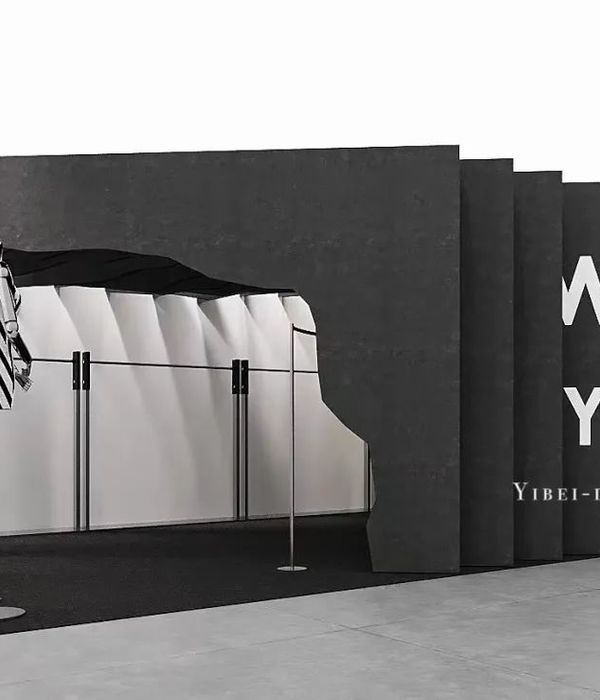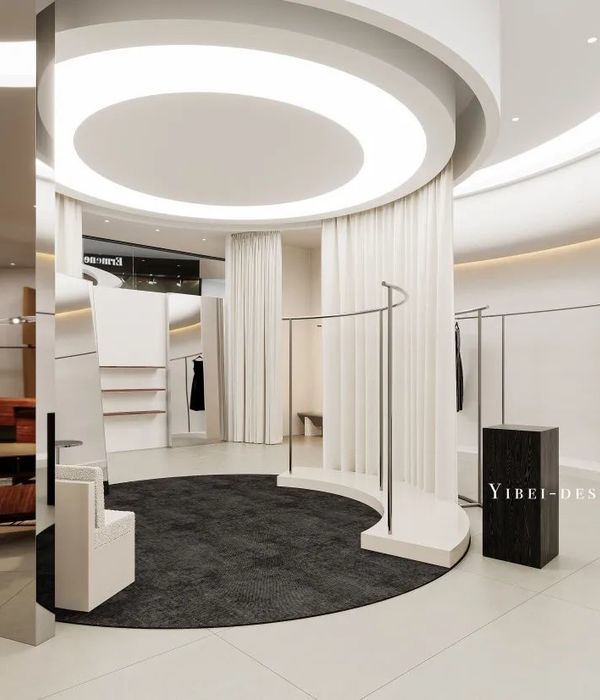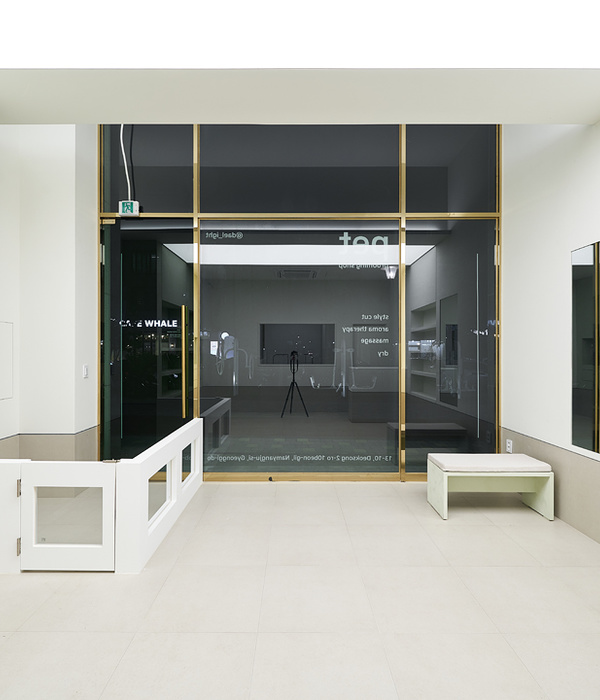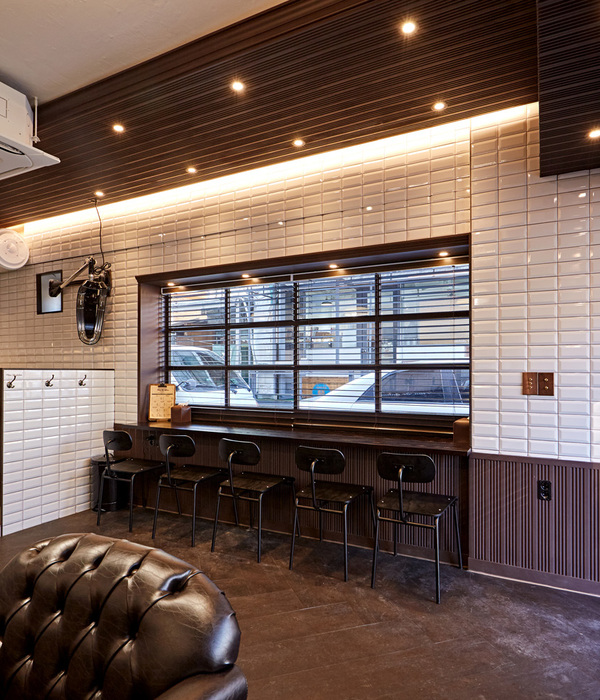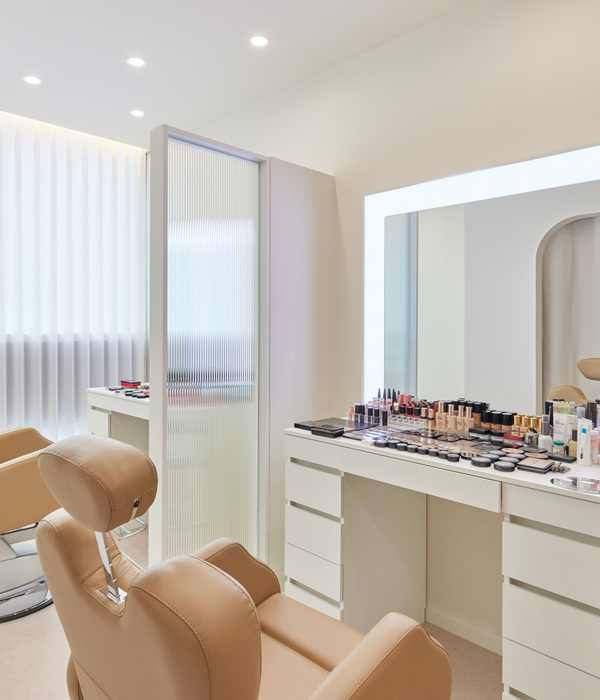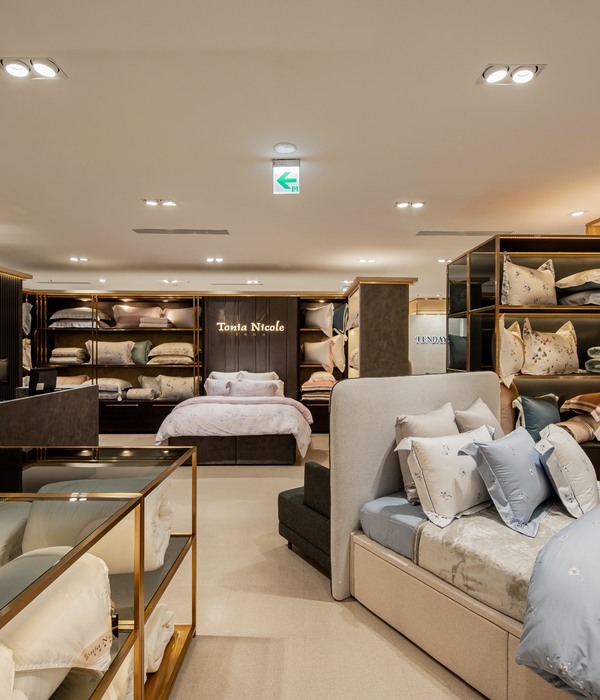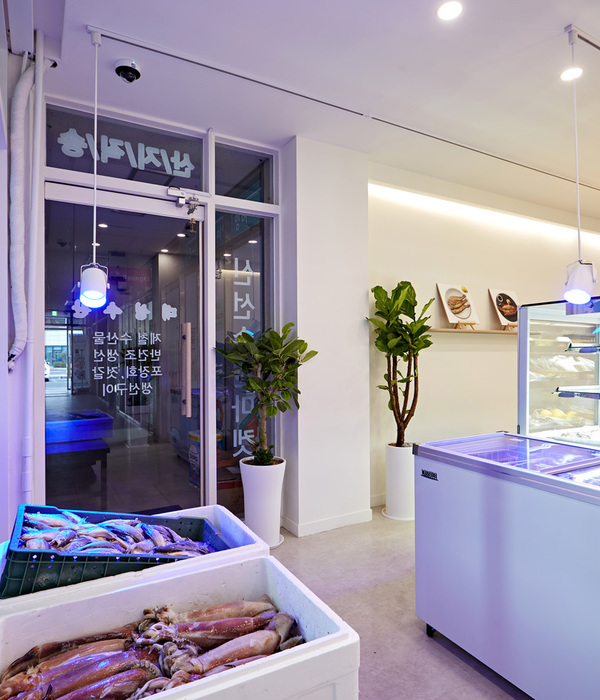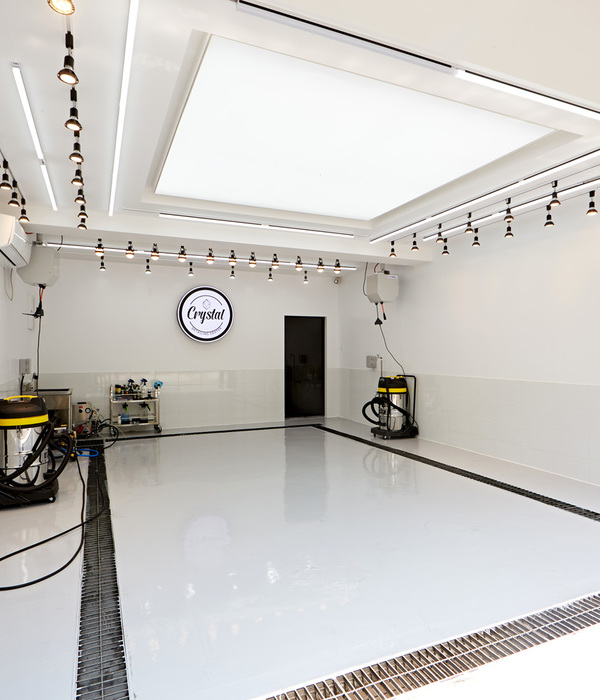来自建材品牌Plasticiet的两位设计师Marten & Joost于今年2月为Ace & Tate眼镜店打造了一间充满趣味的新店铺。
Marten & Joost – the designers and founders of Plasticiet – were inspired by the clean though playful eyewear stores by Ace & Tate.
▼门店外观,exterior view ©Lennart Wiedemuth
天然石材的原始之美和坚固耐用的品质为设计师带来了灵感,他们希望创造一种新型的可持续板材,并使其兼有外观上的吸引力。对此,他们对如何为塑料产品赋予超自然的大理石或水磨石外观进行了深入的研究。
Inspired by the primal beauty and longevity of natural stone they aspired to create a sheet material that would inspire other creators to build objects that can last. To make a waste material appealable they underwent a thorough research on how to give their plastic products a distinct super-natural marbled or terrazzo appearance, for if the material isn’t beautiful it won’t sustain.
▼店铺空间概览,interior view ©Lennart Wiedemuth
设计以白色为底色,增加了深蓝色和亮红色的装饰元素。人们在进入店面时会先经过一个完全用于展示眼镜的空间,随后再被引导穿越塑料材质的拱廊。墙面图案和横梁在空间中重复出现,并与一系列镜面相结合,使客人完全沉浸于一个由回收材料构成的缤纷世界里。
Often used colours are deep blue and bright red on a white base. To emphasise the repetition of the coloured flakes the viewers are first guided through a space with solely glasses on display after which they are guided through the plastic arches. Here the pattern and beams’ repetition combined with mirrors allow the viewers to indulge completely into the recycled world.
▼眼镜陈列区,display area ©Lennart Wiedemuth
▼拱廊空间,the plastic arches
设计师希望创造一个令人感到平静的空间,同时又能够结合品牌的丰富色彩。内部结构借鉴了宗教场所的叙事方法,为店铺带来引人入胜的感觉。同时,与店铺室内设计师的合作也保证了绚丽的色彩在空间中不显得凌乱,而是与空间固有的平和感和冷静感相得益彰。
We wanted to create a calm, serene space combined with the booming colours that they love at the glass wear brand. To create the waste’s narrative we decided that the inspiration needed to come from religious and sacred places – buildings that tell a story – so that the store would almost feel as a recycling temple. Because the flaked sheets are so wild it was even more a necessity to keep the design repetitive and calm. The close collaboration with their store designer made it sure that we wouldn’t deviate from their store concept too much.
▼内部结构借鉴了宗教场所的叙事方法, the inspiration of the design comes from religious and sacred places ©Lennart Wiedemuth
▼彩色面板与空间固有的平和感和冷静感相得益彰,the flaked sheets are so wild it was even more a necessity to keep the design repetitive and calm ©Lennart Wiedemuth
店面中使用的材料是回收的聚乙烯,这是一种在工业和建筑行业以及食品包装、厨房用具、玩具和家具中都十分常见的材料。所有彩色的团块都是由Suez开发的机器人从安特卫普周边的大尺寸废料中回收并分离而来。聚乙烯材料先被切割成尺寸较大的片段,然后人工分类为Ace&Tate门店中常用的红色、蓝色和橙色碎片,最后再与从食品包装回收而来的白色基底相互搭配。部分碎片在融化的过程中保持了其原有的形状,吸引着客人们去发现这些产品的本来面貌。
The recycled plastic used for the Ace&Tate store in Antwerp in polyethylene, a most common material that finds many uses in industrial and construction appliances as well as domestic products such as food packaging, kitchen ware and toys. All the coloured chunks visible in the store are collected from the bulky waste of Antwerp’s periphery separated from other types of plastic by a machine developed by Suez who partnered up with us for the realization of this project.
The polyethylene was shredded to large pieces that were hand sorted in red, blue and orange, colours that are often used in the visual expression of Ace&Tate’s stores. Compared to the white base material – which used to be food packaging – the reclaimed plastic from Antwerp becomes less fluid allowing the pieces to retain their shape in the melting process. This way some of the chunks remain their initial shape and the viewer can indulge into finding products they know, or on the other hand they can completely utilise their own interpretation and visualise recognisable shapes.
▼所有彩色的团块都是从大尺寸废料中回收并分离而来,all the coloured chunks visible in the store are collected from the bulky waste of Antwerp’s periphery separated from other types of plastic ©Lennart Wiedemuth
▼外部橱窗,the showcase ©Lennart Wiedemuth
Plasticiet Press Text: Ace & Tate Antwerp Date: 15-02-2020 Written for editorial use by: Joost Dingemans Pictures accredited to: Lennart Wiedemuth
{{item.text_origin}}

